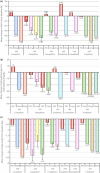Renal sodium glucose cotransporter 2 inhibitors as a novel therapeutic approach to treatment of type 2 diabetes: Clinical data and mechanism of action
- PMID: 24843771
- PMCID: PMC4020327
- DOI: 10.1111/jdi.12214
Renal sodium glucose cotransporter 2 inhibitors as a novel therapeutic approach to treatment of type 2 diabetes: Clinical data and mechanism of action
Abstract
Type 2 diabetes is characterized by impaired insulin secretion from pancreatic β-cells and/or reduced response of target tissues to insulin. Good glycemic control delays the development and slows the progression of micro- and macrovascular complications. Although there are numerous glucose-lowering agents in clinical use, only approximately half of type 2 diabetic patients achieve glycemic control, and undesirable side-effects often hamper treatment in those treated with the medications. There is a need for novel treatment options that can help overcome these difficulties. Sodium glucose cotransporter 2 (SGLT2) inhibitors have recently been developed as a novel potential therapeutic option for the treatment of type 2 diabetes. These drugs lower the plasma glucose concentration through inhibition of glucose reuptake in the kidney, independent of insulin secretion and insulin action, with a consequent lower risk of hypoglycemia. The data of clinical trials with monotherapy as well as combination therapy show that SGLT2 inhibitors have a blood glucose-lowering effect and also reduce bodyweight. A follow-up study shows long-term efficacy and the durability of these effects. SGLT2 inhibitors have the potential to reverse glucose toxicity, and to improve insulin resistance, blood pressure and lipid profile. The available data suggest a good tolerability profile. However, clinicians should carefully prescribe these drugs in light of already reported and/or unexpected side-effects. Further studies in larger numbers and longer-term clinical use data are required to place these agents in standard treatment of type 2 diabetes.
Keywords: Novel antidiabetic agents; Renal glucose reabsorption; Sodium glucose cotransporter 2 inhibitors.
Figures


References
-
- International Diabetes Federation . IDF Diabetes Atlas, 6th edn International Brussels, Brussels, Belgium, Belgium, International Diabetes Federation, 2013
-
- Danaei G, Finucane MM, Lu Y, et al National, regional, and global trends in fasting plasma glucose and diabetes prevalence since 1980: systematic analysis of health examination surveys and epidemiological studies with 370 country‐years and 2.7 million participants. Lancet 2011; 378: 31–40 - PubMed
-
- O'Rahilly S. Human obesity and insulin resistance: lessons from experiments of nature. Biochem Soc Trans 2007; 35: 33–36 - PubMed
-
- Pirola L, Balcerczyk A, Okabe J, et al Epigenetic phenomena linked to diabetic complications. Nat Rev Endocrinol 2010; 6: 665–675 - PubMed
Publication types
LinkOut - more resources
Full Text Sources
Other Literature Sources

